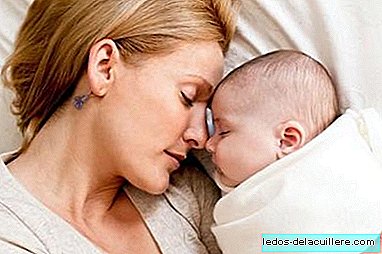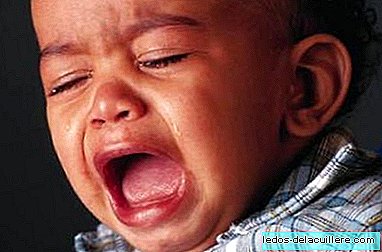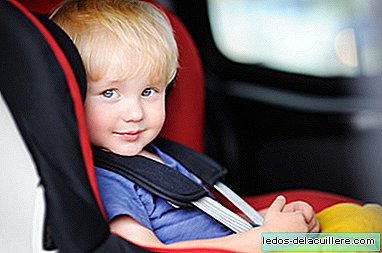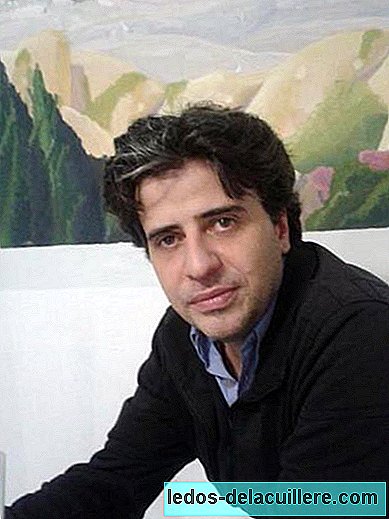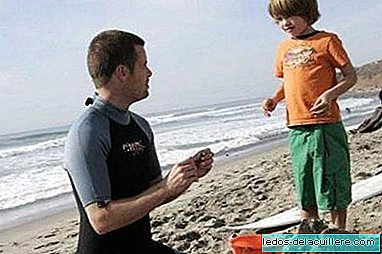
In the 1980s, the disastrous social policies and serious economic problems that Romania suffered caused many children to remain without the possibility of being cared for by their families. About 65,000 children ended up in orphanages, being 85% of them babies with barely a month of life. The ratios of children per caregiver were 10: 1 (10 babies per caregiver) and 20: 1 when the children were older than 3 years.
These ratios could sound medium good, comparing them with the ratios of the current nursery schools. However, comparing them to the role of a father and a mother, it is as if a mother had ten children of one month to care day and night, and another mother had 20 children of 3 years. This made most babies come to pass 20 hours a day in their cribs. These children were adopted by families from the United Kingdom and the US, and some researchers wanted to study them even when they had been with their new families for a long time. The result, which you can see in the image, served to know how parenting style can affect children's brain development.
At the time of adoption ...
At the time of adoption, at disparate ages, but about 2-3 years on average, children had psychomotor development disorders, social difficulties and language delays. At age 4 they were studied again, having already spent time with their adoptive parents and, although many had improved in their overall development, the effects of lack of attention in childhood remained evident. Two years later, with 6 years, the trace of those first years lacked love and affection was still visible.
Studying the children
In a study that is already considered a benchmark for current education professionals and a clear sign that the authoritative education style must change to something else, the brains and behavior of ten of the children who lived in the orphanages were studied from Romania Six of them were boys and the remaining four girls, and had an average age of 8.8 years (ages between 7 and 11 years). All these kids they entered the orphanages being between 4 and 6 weeks old and they remained there for an average of 38 months (range between 16 and 90 months). They were adopted by North American families, with whom they had an average of 67.2 months (range between 15 and 113 months).
Those children whose parents maintained contact with the children while in the orphanage, those who had problems during pregnancy or childbirth, the children of mothers who abused substances that could affect the baby or those who already had any were not included in the study birth disability
They compared these children with two groups. A group of 17 normal adults with an average age of 27.6 years and a group of 7 children between 7.9 and 13.5 years, with epilepsy.
All the children in the study completed tests to know the general, verbal development, to know how was the understanding of language and expression, how visual and verbal memory, what was the skill with the hands, what the degree of attention and impulsivity, etc. further they studied their brains with brain scans to compare them
Test scores
When analyzing the test results, they saw that children who had spent their early childhood in the orphanages of Romania had worse scores in the intellectual field (with scores close to 82, 100 being the normal score), in intelligence nonverbal (scores of 90), in language (around 80), in memory (78), in attention (77), impulsivity (52) and cognitive efficiency (72) and in fine psychomotor skills or manual dexterity ( 80).
Observing the behavior of the children, 50 being a normal score, they saw that they had more behavior problems (70), anxiety and depression (68), social problems (69), mental problems (71.3), attention problems (75 ), delinquent behaviors (63) and aggressive behaviors (65).
Come on, that most of them have spent more time with an adoptive family than in orphanages, the trace of it proved to be terribly evident even in advanced ages, with almost 9 years on average.
Results of brain scans
When comparing the brain scans, they observed that these children, who had received basic care at the orphanage, with food, shelter, a crib and clean clothes, but lacked the love and attention of parents, had inactive areas in many parts of the brain (in black the non-active zones, in red the most active ones). Focusing on inactive areas, they saw that they were mostly temporal lobes, where emotions are processed and regulated. Having not activated as in the other children, the logic said that these children could have a lower social and emotional capacity, and as they saw in the tests, this was confirmed.
Conclusions
As we have said on other occasions, the brains of babies are not a muscle to be trained with the misfortunes and frustrations of life, depriving children of affection, of taking them in the arms or of our company so that they learn to Be more autonomous.
It is obvious that no father or mother in his right mind will provide his children with an upbringing like an orphanage, based on giving him what he physically needs and leaving him up to 20 hours in the crib, but it is interesting to know what would happen if we went to that extreme . Without reaching it, paying attention to the voices, opinions and theories that recommend us to let them cry, make them sleep alone in their cribs at night, even if they suffer, let them cry for a while, which is good for their lungs to expand and to learn that in life they will not have everything, etc., we could achieve something similar. Probably the defects would be minor, there would probably be less inactive areas of the brain, but if the lack of affection, love, affection and support in a baby can make the repercussions visible even at 9 years of age, it is clear that what we do with our children, even when they are little, will be able to determine to a large extent who they will be in adulthood.
I always like to compare the early childhood of children, say the first 4-5 years, with the structure of a building. A structure that is done with patience, in a way studied based on the terrain and the weather, with the best materials and reinforced as much as you need will always endure more "what they throw" than a structure made with worse materials, quick to finish earlier and with less care in its creation. It may also hold the same as the first one, but who knows if the cracks will not be greater, if any day the roof of the balconies begins to fall or if the humidity appears before what is expected. "Already, but a building not only depends on itself, it also depends on the land on which it is located," you will tell me. And I answer: exact. A building depends on itself, on its structure and obviously depends on where it is. That's why a baby not only depends on himself, but also of the environment in which he lives, and that's where we can do a lot, a lot, as we just saw.



